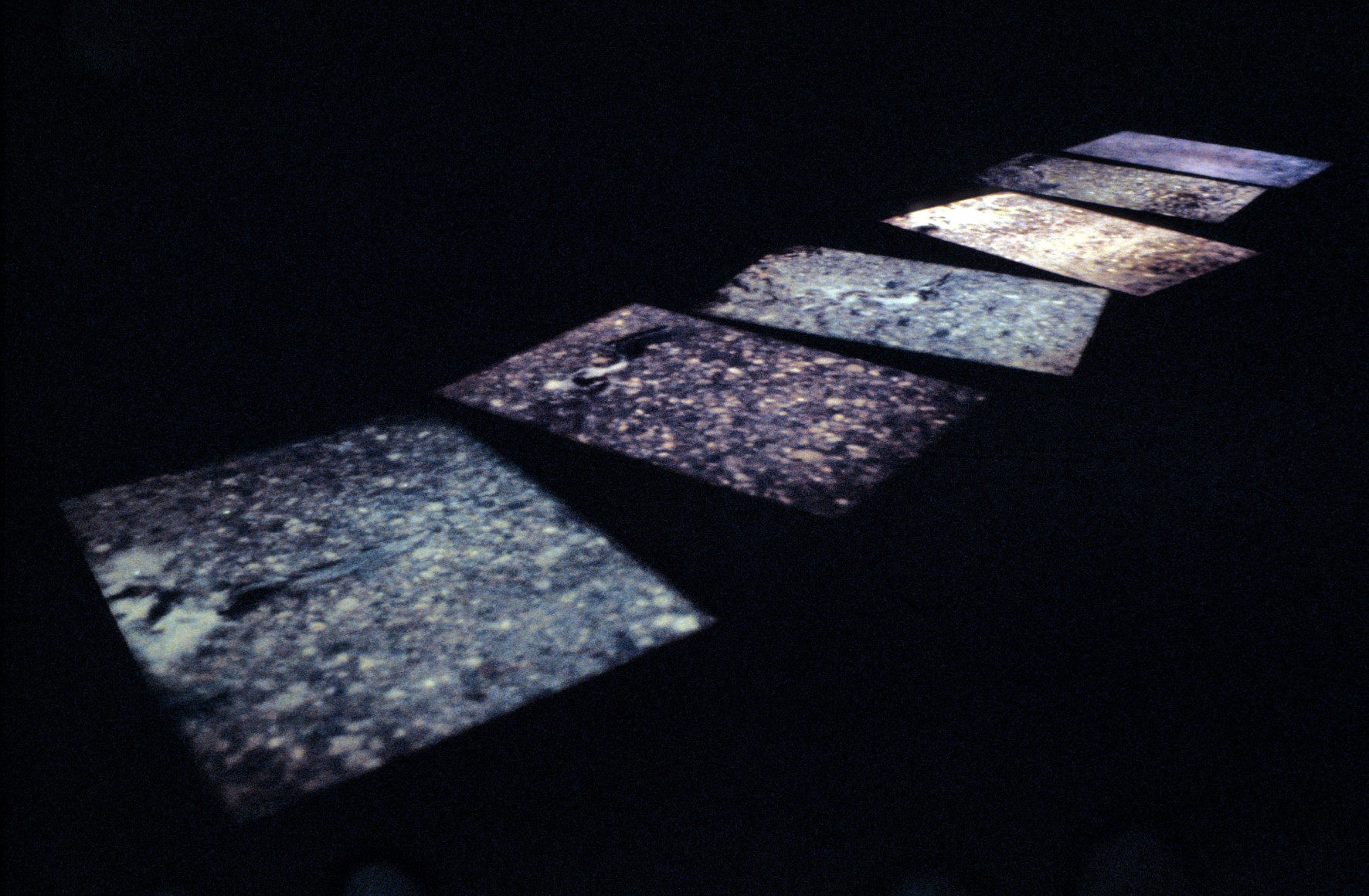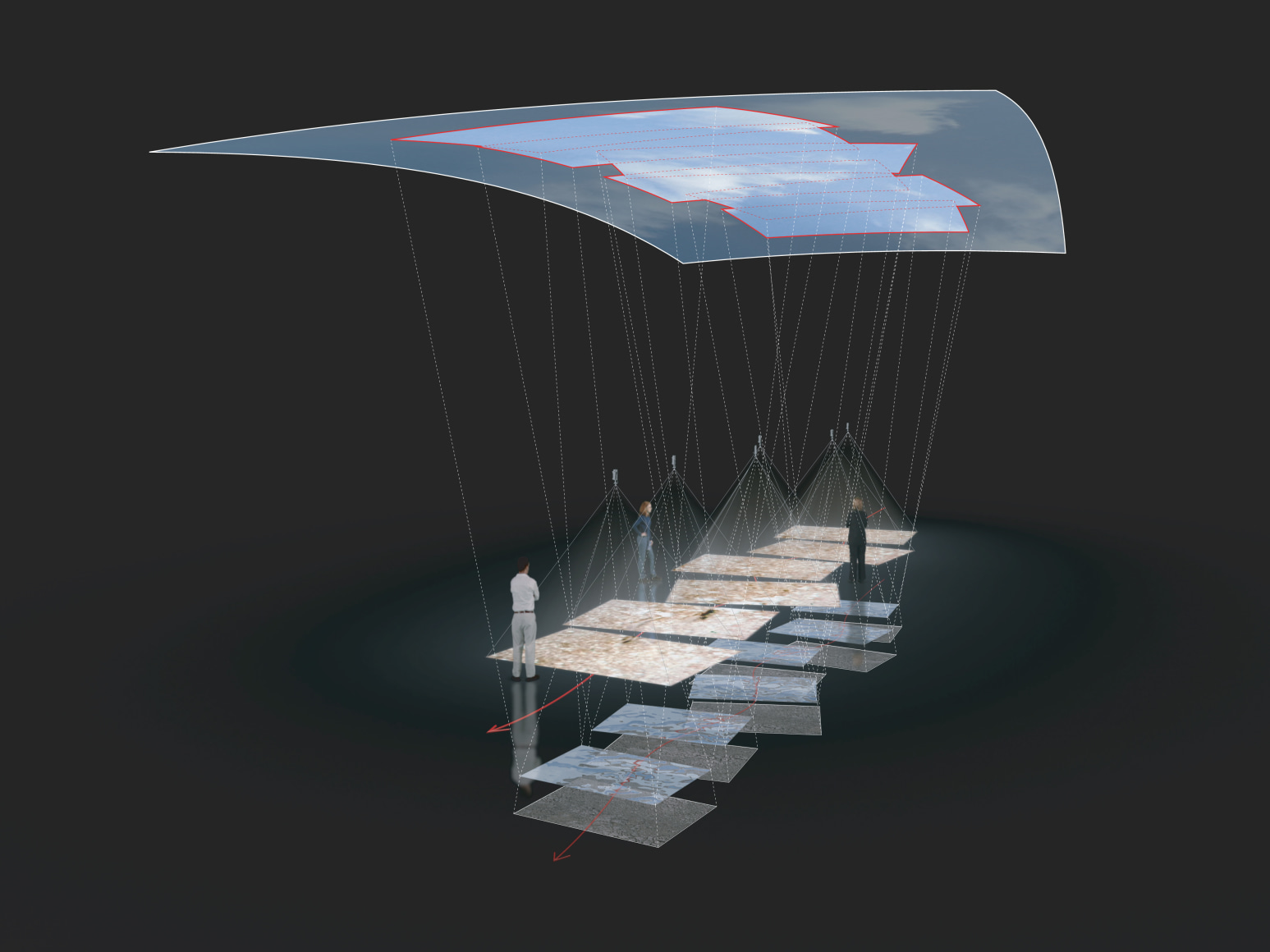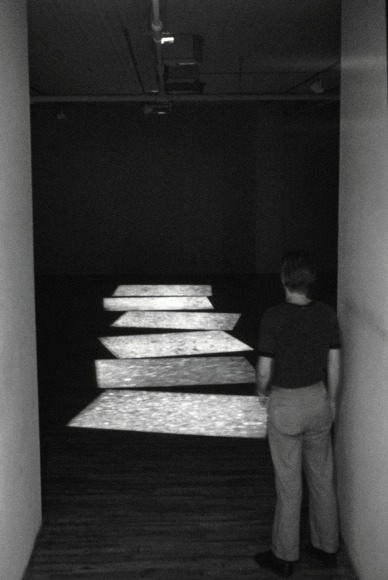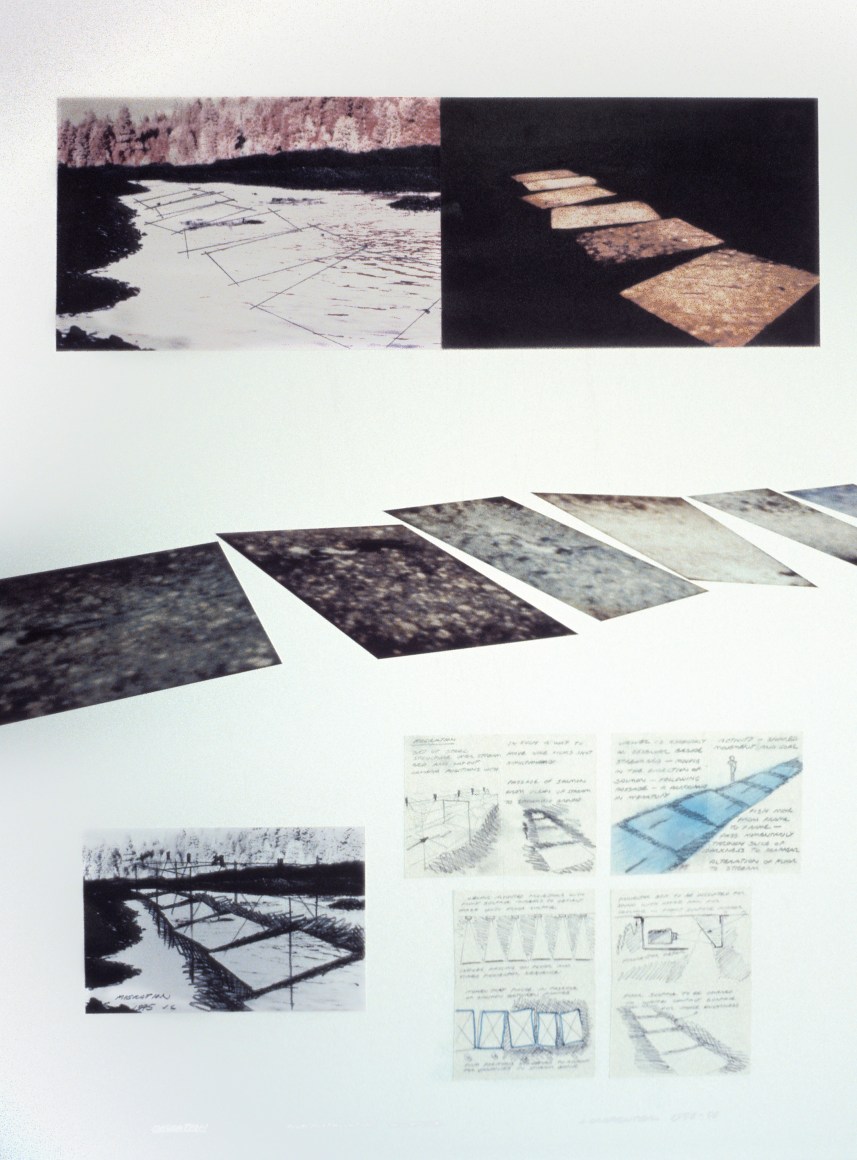Migration is an entirely analog film installation that transposes interrelated environmental phenomena into the gallery.
MIGRATION
1975
BackImages
Video
Description
The University of Washington managed this small tributary to the Puget Sound as a site to experiment with various strains of migratory salmon. Anchored to scaffolding erected over the river, a series of cameras set 90 degrees to the water, were spaced apart, oriented to follow the flow of water and synchronized, thereby capturing a fractured but accurate record of a 60 foot segment of the stream. Each of the films was then projected onto the gallery floor at full scale, creating a 60 foot long installation, reframing the river’s flow across the gallery floor.
One could observe the water flow over the gravel bed of the stream and the salmon moving up from one film frame, through a moment of darkness, into the next film frame and so on for a total of nine filmed frames. By editing the timing in post-production, the image of the sky became clearly visible on the surface of the river and was periodically distorted by the image of the salmon, making visible the spatial compression created by the combination of transparency and reflection.







